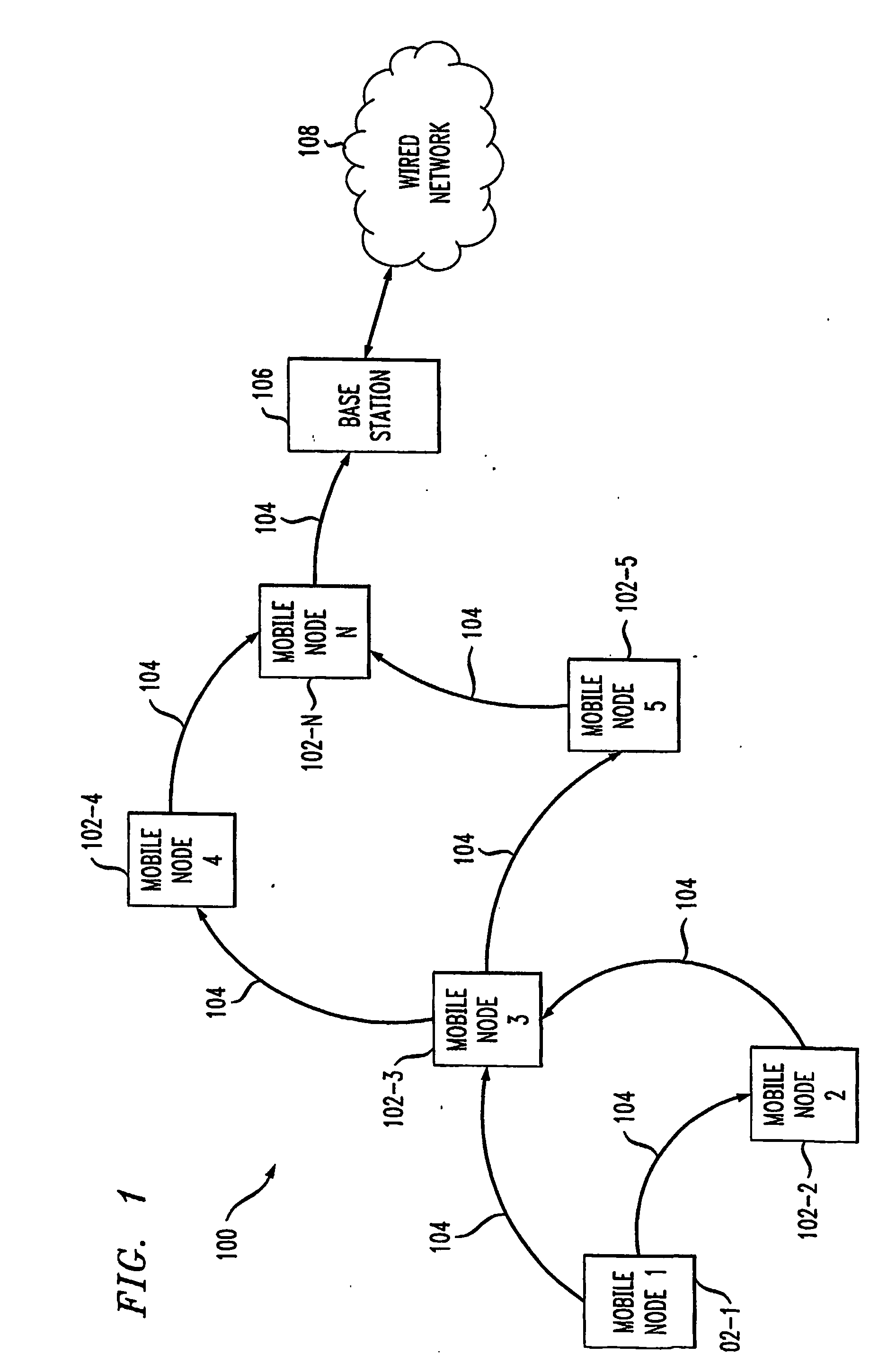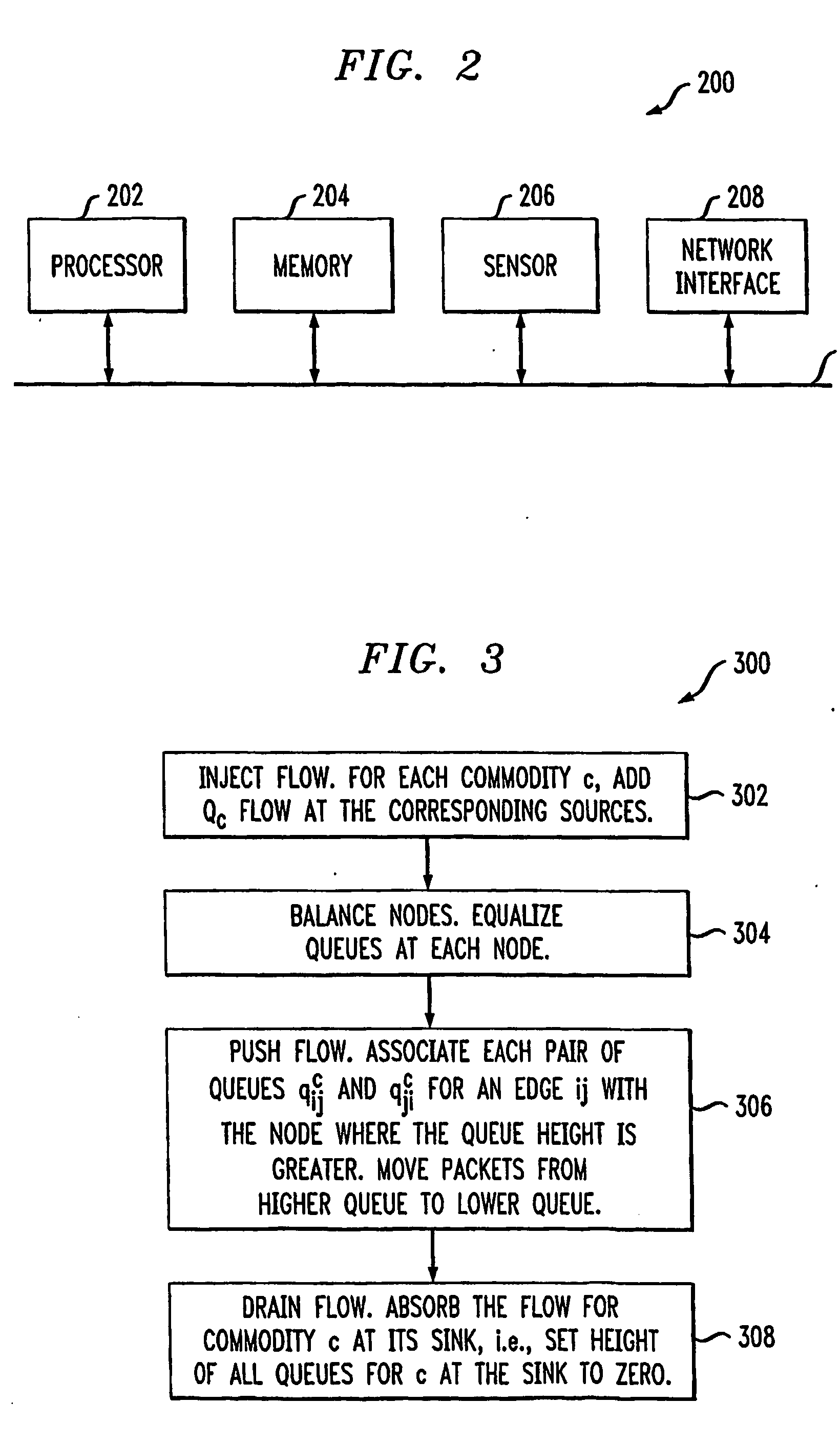Maximum lifetime routing in wireless ad-hoc networks
a wireless ad-hoc network and maximum lifetime technology, applied in data switching networks, high-level techniques, instruments, etc., can solve the problems of affecting network connectivity, heuristic approach can perform arbitrarily poorly, and more sophisticated routing methodologies associate costs. to achieve the effect of maximizing the lifetime of the network
- Summary
- Abstract
- Description
- Claims
- Application Information
AI Technical Summary
Benefits of technology
Problems solved by technology
Method used
Image
Examples
Embodiment Construction
[0024] The following description will illustrate the invention using an exemplary ad-hoc network architecture. It should be understood, however, that the invention is not limited to use with any particular ad-hoc network architecture. Rather, the invention is more generally applicable to any network architecture in which it is desirable to perform effective data routing.
[0025] Referring initially to FIG. 1, a block diagram illustrates a wireless ad-hoc network in which the techniques of the present invention may be implemented. As shown, a wireless ad-hoc network 100 comprises a plurality of mobile nodes 102-1 through 102-N connected by wireless links. The number of nodes N depends on the application in which they are to be deployed and, thus, the invention is not limited to any particular number.
[0026] Nodes 102-1 through 102-N are free to move randomly and organize themselves arbitrarily. Thus, the topology of the ad-hoc network 100 is dynamic. Further, nodes 102-1 through 102-N...
PUM
 Login to View More
Login to View More Abstract
Description
Claims
Application Information
 Login to View More
Login to View More - R&D
- Intellectual Property
- Life Sciences
- Materials
- Tech Scout
- Unparalleled Data Quality
- Higher Quality Content
- 60% Fewer Hallucinations
Browse by: Latest US Patents, China's latest patents, Technical Efficacy Thesaurus, Application Domain, Technology Topic, Popular Technical Reports.
© 2025 PatSnap. All rights reserved.Legal|Privacy policy|Modern Slavery Act Transparency Statement|Sitemap|About US| Contact US: help@patsnap.com



